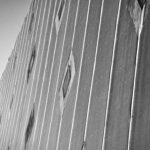High-Quality FTTH Cable Production Line Solutions
Did personally realize that the requirement for high-speed internet has escalated so significantly? It’s projected that over 82% of new broadband accounts in the upcoming years will necessitate Fiber To The Home (FTTH) technologies. This astonishing statistic emphasizes the vital need for high-quality FTTH cable production line guarantee dependable fiber connectivity solutions and efficient broadband network operations.
In this write-up, we will investigate the significance of resilient FTTH cable production lines. We will discover how they improve fiber connectivity and their crucial role in enhancing broadband network efficiency. We will draw insights from recent industry knowledge and trends noticed at pivotal trade fairs like Wire China 2024 and Wire Dusseldorf 2024.
Essential Takeaways
- The demand for FTTH technologies is rapidly increasing, driving the need for effective production lines.
- High-quality cables are vital for optimal fiber connectivity solutions.
- FTTH cable production lines contribute significantly to overall broadband network efficiency.
- Insights from industry trade fairs provide valuable knowledge for manufacturers and operators.
- Putting resources into in state-of-the-art production equipment can boost output and reliability.
Grasping FTTH Cable Production Lines
FTTH production lines are crucial in the fiber optics world. They are established for cable manufacturing, making high-quality fiber optic cables productively. With broadband demand rising, the role of FTTH production lines is more significant than ever.
The process of cable manufacturing converts raw materials into products that carry data at fast speeds. These lines use cutting-edge technologies to optimize tasks from fiber drawing to final assembly. Each component works together to guarantee the product achieves high quality standards.
Recent tech developments have boosted FTTH production lines. Automation and computerization have led to better accuracy, less waste, and quicker production. This evolution boosts manufacturing efficiency and makes the final products sustainable and eco-friendly.
| Part | Function | Technological Advances |
|---|---|---|
| Fiber Draw Tower | Manufactures optical fibers | Enhanced draw speeds, precision temperature control |
| Sz Stranding Line | Bundles fibers into cables | Automated tension and speed monitoring |
| Fiber Coloring Machine | Applies color coding for identification | High-speed application, eco-friendly dyes |
Efficient FTTH production lines are essential to fulfilling the rising fiber optics demand. They propel innovation in telecommunications. As technology advances, these systems will expand, aiding a more linked world.
Value of Superior Cables in the FTTH Market
In today’s quickly changing tech world, the importance of premium cables is more critical than ever, especially in the FTTH market. As the requirement for rapid internet and more stable services escalates, it’s essential for providers to guarantee their setup can fulfill these FTTH market demands.
Dependable fiber connections are crucial to offering the quick internet users crave, whether at home or in business settings. The link between cable quality and network performance is evident. Recent discoveries from tech conferences show that premium cables substantially enhance data transmission speed, resulting in higher user satisfaction.
- High-quality cables cut down on signal loss, ensuring top-notch performance over long distances.
- Sturdy fiber connections are crucial for ensuring services functioning smoothly during busy times.
- Investing in top-notch cables leads to fewer service interruptions and upkeep needs.
In brief, prioritizing high-quality cables in FTTH network solutions is vital for success in a challenging market. Better performance is directly tied to the use of advanced materials and methods, improving the overall user experience.
| Element | Importance of High-Quality Cables | Impact on Performance |
|---|---|---|
| Signal Integrity | Reduces attenuation and interference | Boosted data rates and reliability |
| Durability | Withstands environmental factors | Longer lifespan and reduced maintenance |
| Installation Flexibility | Adaptable to various network designs | Easier upgrades and scalability |
Components of an FTTH Cable Production Line
The performance and grade of an FTTH cable production line depend on its main components. Each part is crucial for exact and efficient fiber optic processing. Familiarizing with these components helps manufacturers improve their production for better outputs.
Sz Stranding Line
The sz stranding line is crucial for organizing optical fiber strands. It preserves the proper tension during the process. Its state-of-the-art technology guarantees fibers are uniformly assembled, enhancing cable performance. Innovations in this line enhance the reliability of FTTH production, making it a top choice for manufacturers aiming for efficiency.
Fiber Coloring Machine
A fiber coloring machine renders different fibers in a cable visible and distinct. It adds bright colors to the fibers, simplifying installation and maintenance. Precise coloring techniques guarantee each fiber is separate, minimizing connectivity errors. Efficient coloring methods improve operational accuracy and product quality.
Fiber Draw Tower
The fiber draw tower is crucial in creating high-quality optical fibers. It manages the drawing process with precision, securing fibers have uniform diameter and strength. Its cutting-edge capabilities guarantee fibers perform optimally, essential for successful FTTH deployments. Findings from events like Wire Dusseldorf 2024 highlight the constant evolution and importance of this technology.
| Element | Purpose | Gains |
|---|---|---|
| Sz Stranding Line | Arranges optical fiber strands with precision | Improves cable performance and reliability |
| Fiber Coloring Machine | Applies colors for easy identification | Enhances installation accuracy |
| Fiber Draw Tower | Controls fiber drawing process | Produces consistent and robust fibers |
FTTH Cable Production Line: Essential Technologies to Consider
The FTTH cable production field is rapidly changing with new technologies. These developments are key to improving efficiency and quality in cable making. Facilities that use the most recent machinery see big increases in output and cost savings.
Automated stranding machines and advanced drawing towers are major advancements. They bring more precision and speed to the manufacturing of fiber optic cables. This ensures cables are dependable and long-lasting, satisfying high standards.
- Automated Systems: Automated systems make production more efficient, cutting down on mistakes.
- Real-Time Monitoring: With monitoring software, production metrics are observed live. This helps detect any issues quickly.
- Robust Quality Control: New fiber optic improvements allow for thorough quality checks on every cable.
Trade fairs have highlighted these advancements, offering insights to manufacturers. Those who embrace the latest FTTH technologies lead in efficiency and market share.
Pros of Using Advanced Fiber Equipment
In the quickly changing world of FTTH cable production, advanced fiber equipment is crucial for maintaining a lead. These technologies enhance both quality and efficiency, making production more cost-effective. The fiber secondary coating line and the compact fiber unit are especially significant.
Fiber Secondary Coating Line
The fiber secondary coating is essential for boosting the durability and flexibility of fiber cables. It applies a protective layer that minimizes damage during installation and over time. The benefits of this technology include:
- Enhanced durability: The extra coating makes more robust to environmental damage.
- Increased performance: Proper protection guarantees signal quality, leading to better data transmission.
- Reduced maintenance costs: With longer-lasting cables, fewer repairs and replacements are needed, reducing money.
Compact Fiber Unit
Today, there’s a growing demand for space-saving solutions in production. The fiber draw tower offers several advantages:
- Space efficiency: Its design allows for more production in less space.
- Higher output: Optimized processes lead to greater production rates.
- Cost-effective operation: Lower operational costs result from lower space requirements.
Recent exhibitions have shown a considerable improvement in output quality with these advanced technologies. Putting resources into such equipment is vital for manufacturers looking to succeed in a competitive market.
The Role of Optic Fiber Cable Equipment in Production
Optic fiber cable equipment is essential in the production of high-quality fiber optic cables. Its performance directly impacts cable efficiency. This is vital for meeting the rising demands of the telecommunications sector.
Components like fusion splicers, optical testers, and routers are vital for seamless production. Splicers guarantee precise connections between fiber strands, lowering data loss. Testing equipment inspects cable integrity and performance, guaranteeing they meet standards before use.
Recent industry events have highlighted the incorporation of advanced optic fiber equipment into production lines. These events give valuable insights into new techniques. They highlight improving production efficiency and cable quality. Companies implementing these technologies experience increased productivity and lower costs.
- Fusion Splicers: Essential for attaining low-loss connections between fibers.
- Optical Testers: Crucial for checking cable performance and compliance with specifications.
- Routers: Facilitate efficient data transmission across networks.
Choosing the right optic fiber cable equipment can substantially boost production lines. It underscores the necessity for advanced technology to remain competitive in the market.
Choosing the Right Manufacturer for FTTH Solutions
Choosing the right FTTH cable production solution manufacturer is crucial. Buyers must emphasize on equipment quality, as it impacts production line efficiency and reliability. A detailed evaluation of FTTH manufacturers can discover essential information about their products and equipment performance.
When picking a supplier, consider these key factors:
- Equipment Quality: Evaluate the materials and technologies used. High-quality equipment leads to better durability and consistent performance.
- After-sales Service: Reliable customer support is crucial for ensuring production efficiency. Search for manufacturers recognized for timely support and maintenance.
- Industry Reputation: Review client feedback and industry reviews. A well-regarded manufacturer is more likely to satisfy expectations.
Recent trade fairs in 2024 showcased top FTTH manufacturers known for their quality equipment and customer service. Attendees noted the influence of technological advancements on their supplier choices. This indicates the necessity to keep up with industry standards and innovations.
The right manufacturer impacts both current production needs and future success in the FTTH market. Choosing reliable suppliers can increase productivity and reduce operational issues.
Investment in a Robust FTTH Cable Production Line
Putting resources into in a high-quality FTTH cable production line can substantially impact a company’s bottom line. It’s essential to understand the balance between production line costs and the potential return on investment. A robust production line enhances efficiency, lowers waste, and results in cost savings over time.
Cost Considerations and ROI
When evaluating the feasibility of an investment in FTTH, several cost factors come into play. Upfront expenses include equipment purchase, installation, and training. Ongoing costs, such as maintenance and materials, must also be accounted for in any financial analysis.
To show the potential for return on investment, look at these elements:
- Increased throughput: A modern production line can attain higher output levels relative to older equipment.
- Quality enhancements: Better technology leads to fewer defects and higher-quality cables, which can lower returns and warranty claims.
- Operational efficiency: Optimized processes and automated systems minimize labor costs and boost productivity.
Here’s a table detailing key financial parameters for different FTTH production line options:
| Production Line Type | Upfront Costs ($) | Estimated Annual Maintenance Costs ($) | Expected ROI (%) |
|---|---|---|---|
| Basic Production Line | 100,000 | 10,000 | 15 |
| Mid-Range Production Line | 250,000 | 20,000 | 25 |
| Advanced Production Line | 500,000 | 30,000 | 35 |
Determining the return on investment for each option will assist companies identify which production line might provide the most beneficial financial outcome over its lifespan. By meticulously evaluating production line costs alongside the long-term benefits, businesses can execute smarter investment decisions.
Latest Innovations in FTTH Production Techniques
Recent innovations in FTTH technologies have substantially altered production techniques, resulting in superior efficiency and higher output quality. These industry advancements highlight methods that optimize manufacturing processes while decreasing waste and increasing yield.
One notable trend entails the adoption of automated systems fitted with artificial intelligence. This technology offers real-time monitoring and adjustments during production. Factories can now attain unprecedented precision in their output, minimizing the risk of defects.
Additionally, the incorporation of eco-friendly materials in SZ stranding line is growing traction. Companies focus on sustainability by employing recyclable materials, showing a growing awareness of the environmental impact related to cable production.
Recent showcases and conferences have emphasized several cutting-edge approaches:
- Enhanced fiber optic splicing techniques that lower signal loss, ensuring better performance.
- Advanced testing methodologies that enable quicker identification of defects, resulting in improved quality control.
- Integration of robotic systems for cable assembly, which speeds up the manufacturing process while ensuring high standards.
These innovations represent a promising shift toward more effective and environmentally responsible FTTH production techniques. They make them invaluable assets for companies aiming to stay competitive in the dynamic telecommunications landscape.
Maintaining and Improving Your Production Line
Effective production line maintenance is essential to the long-term success of any FTTH cable manufacturing operation. Regular inspections and upkeep help detect potential issues early. This guarantees a smooth-running production line.
Adding equipment upgrades to maintenance routines boosts operational efficiency. For example, replacing old machinery with modern models lowers downtime and improves output quality. Manufacturers often achieve better performance and lower costs over time by allocating resources to new technologies.
- Create a routine maintenance schedule to prevent breakdowns.
- Invest in advanced monitoring systems to observe equipment performance.
- Train staff on the significance of routine inspections and optimizations.
By implementing these strategies, manufacturers can substantially increase productivity. They also enhance the durability of their production lines. Those who prioritize both maintenance and upgrades see a substantial improvement in consistency and efficiency. This positions them for success in a cutthroat market.
Case Studies of Successful FTTH Installations
FTTH case studies offer important insights into the transformation of fiber connectivity across various markets. They showcase how advanced production line setups are creating broadband access better in both urban and rural areas. For example, a major telecom provider in the Midwest used advanced stranding technology. This led to a 30% increase in network reliability, as seen at recent industry events.
A partnership between a global fiber optic manufacturer and a regional ISP also showcased the benefits of a custom fiber draw tower. This setup boosted installation efficiency, leading to faster data transmission and lower latency. These improvements directly benefited local businesses and residents. Such real-world examples emphasize the need for picking the right equipment and technologies for successful FTTH deployment.
Reports from trade shows and industry research consistently show that successful installations improve service quality and customer satisfaction. These FTTH case studies show that integrating technology, quality control, and customer focus drives significant advancements in fiber connectivity. This sets the stage for future innovations in the sector.



